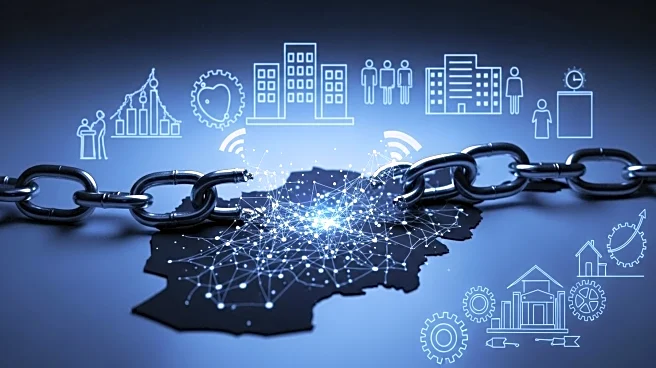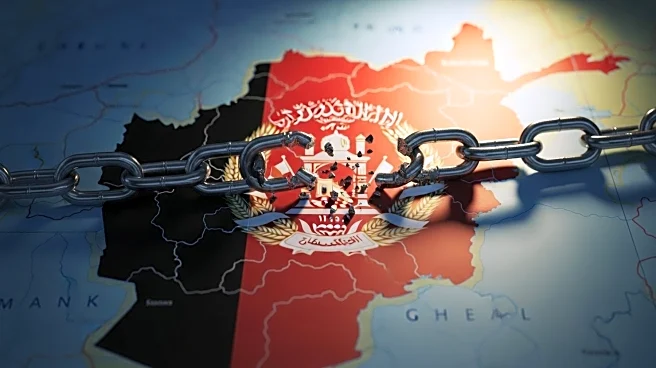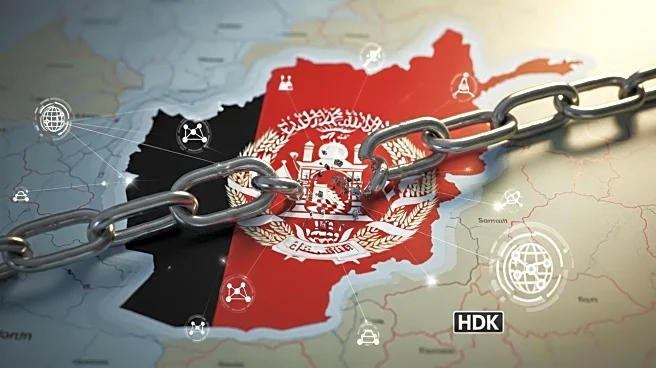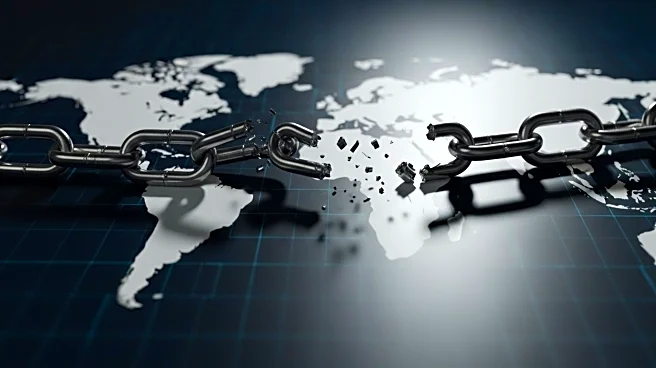What's Happening?
Afghanistan is experiencing a significant internet shutdown, now in its third day, disrupting nearly all digital and phone communications. This blackout has grounded planes, closed businesses, and affected daily life in Kabul. The Taliban regime, which signaled plans to ban fiber-optic internet, claims the shutdown is due to outdated infrastructure being replaced. However, the disruption has halted visa services, internal communications, and impacted critical sectors like banking and healthcare. The United Nations has called for the immediate restoration of internet access, citing severe implications for the Afghan population.
Why It's Important?
The internet shutdown in Afghanistan has far-reaching implications, affecting economic activities, emergency services, and the social fabric of the country. It isolates Afghan citizens, particularly women and girls, who rely on digital platforms for education and community. The disruption could exacerbate the country's economic challenges and deepen public dissatisfaction with the Taliban regime. Internationally, it raises concerns about human rights and the Taliban's governance approach, potentially influencing foreign policy and humanitarian aid strategies.
What's Next?
The Taliban's decision to cut internet access may lead to increased international pressure and calls for intervention to restore connectivity. The regime's internal dynamics and external relations could be affected, as the shutdown may be seen as a move to consolidate power. The situation could prompt further discussions on digital rights and the role of technology in conflict zones. Observers will be watching for any restoration of services and the regime's response to domestic and international reactions.
Beyond the Headlines
The internet blackout could be a strategic move by the Taliban to control information flow and suppress dissent. It highlights the regime's struggle to balance traditional governance with modern technological needs. The situation underscores the importance of digital infrastructure in contemporary governance and the potential for technology to be used as a tool of control.












